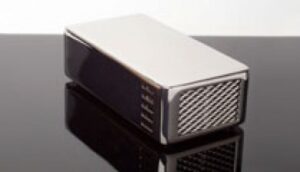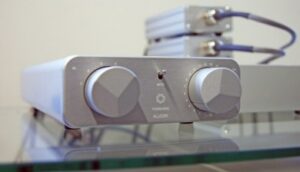Seismic Waves
What is it that distinguishes the sound of a great hi-fi system from a merely good one? Is it how loud it will go? Does it depend on the amount of bass energy it can pump into your listening room? Is it something to do with pace, rhythm and timing or what hi-fi reviewers sometimes refer to as the sound being ‘fast’? These are a few audible characteristics among many. Some can be emphasised or attenuated to alter the sound, and there any number of cable and ‘accessory’ manufacturers out there that will help you achieve such an ‘effect’, some arguably desirable, some less so. Either way, and however beneficial the changes might seem, they are most likely benign distortions, and minimising distortion, in all its forms, is a principal goal of hi-fi. Only then will a true sense of realism be won.
So here’s the sobering fact. Every hi-fi system, from humble to high-end, has its performance ceiling set not by the cost and quality of its individual components but by how completely those components – the source, the amplification, the loudspeakers – are isolated from the world around them. And when we say ‘world’ we mean that literally, as we’ll explain in a moment.
Vibration.
Without it, we wouldn’t hear a thing. Yet, as interference, it can destroy the realism – critically realised in the finest, low-level detail – of the music we love. The aim, therefore, is to preserve the good vibrations (something worth signing about as the Beach Boys would no doubt agree) by preventing contamination from the bad ones.
This used to be thought of as a singularly circular problem. That is, it was all the fault of the loudspeaker, as it was both the means for converting electrical signals into the vibrations we perceive as music and (because it was physically coupled to the room in which it was being played), also the culprit for resonant interference – not only to the detriment of its own performance but also everything else in the playback chain.
Nothing much has changed in this respect. If unchecked these unwelcome resonances are a fundamental cause of under-achieving sound quality, and well recognised as such – to the extent that, over the years, the burgeoning ‘isolation’ business has spawned myriad ‘solutions’ to the problem, ranging from the widely favoured spiked speaker stands and equipment racks to simple, cushioning elastomers and, more recently, exotic, expensively-encased ceramic balls with mysterious ‘energy-draining’ properties. We wouldn’t dispute that they all do something to change the sound – maybe enough, in some cases, to persuade the listener that unwanted vibrations have been vanquished and all is well with the world. It isn’t.
Microtremors.
Any group of components brought together with the aim of accurately reproducing music or a film soundtrack is at the mercy of our planet, and the consequences truly are seismic. Every moment of the day and night, global activity is occurring, mostly manifested as a phenomenon known as microtremors. These ground-borne seismic vibrations are always present, everywhere, all the time. They are Mother Earth’s never-ending backing track, the residual noise recorded on seismographs between earthquakes. Unless filtered out, the microtremors join in and wash away crucial fine detail.
So how come we can’t feel them? Their amplitude is very low, measuring between force -1 and force 2 on The Richter Scale, as shown (fig. 1) from the US Geological Survey. No, you can’t feel them and the only way you can see them is as a graphic trace. But you can hear their degrading influence. The presence of low-level seismic activity 24/7 is responsible for undermining your hi-fi’s potential to give true musical satisfaction and ultimately compromises your financial investment in whatever hardware you own or choose to own.
The solution.
Townshend Audio is the world’s only manufacturer of isolation systems that protect hi-fi and AV equipment from seismic microtremors. The first line of defence is the Seismic Podium. Designed as a range to accommodate any size and weight of speaker – standmount plus stand, floorstander or subwoofer – the Seismic Podium breaks the acoustic connection between the floor and the speaker, preventing the passage of deleterious vibrations both to and from the speaker cabinets. For a detailed explanation of why this is an absolute necessity before any speaker can perform to its true potential, read ‘Earthquakes on hi-fi’, http://goo.gl/sv3GsX.
Floated on Seismic Isolation Podiums, speakers are freed from the ever-present seismic activity and room/floor interactions that seriously degrade sound quality. The result is simply magical, allowing listeners to hear into their favourite music in a way they were never able to previously. When under your speakers, they will give you immediate improvements in overall sound by preventing speaker generated vibration from entering the floor and sound from entering your speakers. By eliminating the resonance between the speaker-cabinet mass and the floor, the sound will be noticeably clearer, much more tuneful, controlled and natural. Bass boom is significantly reduced and there will be a far larger, much deeper and wider sound stage. The sound becomes natural and more enjoyable.
As many have already witnessed, the improvements are a revelation and a true pleasure – not least because severing the acoustic link between the speaker and the floor allows playback at more realistic volume levels without annoying the neighbours!








